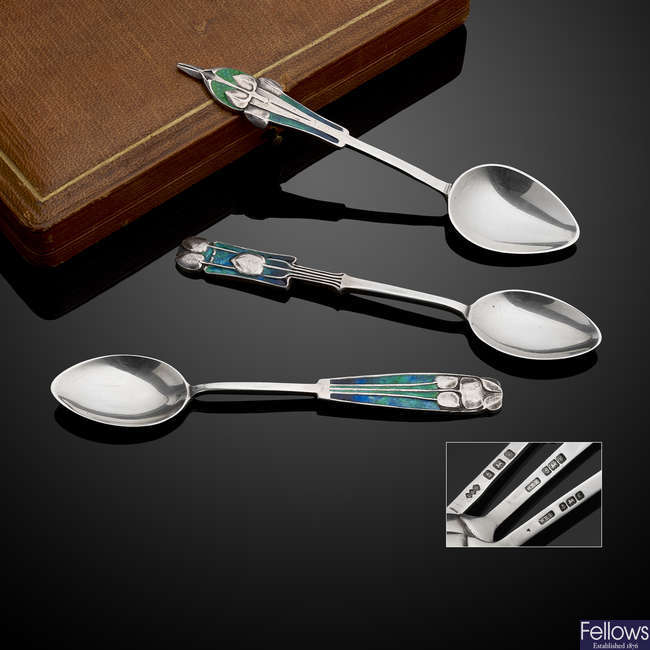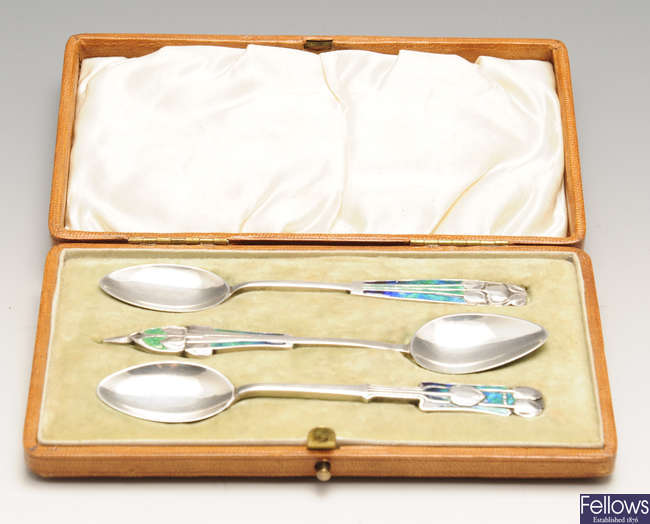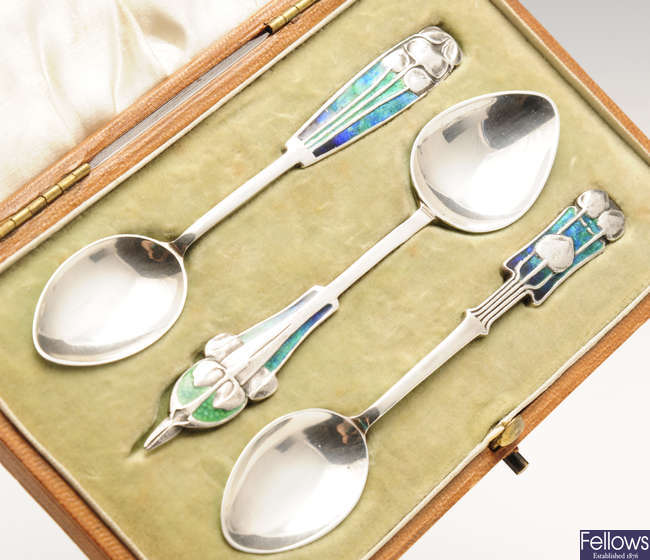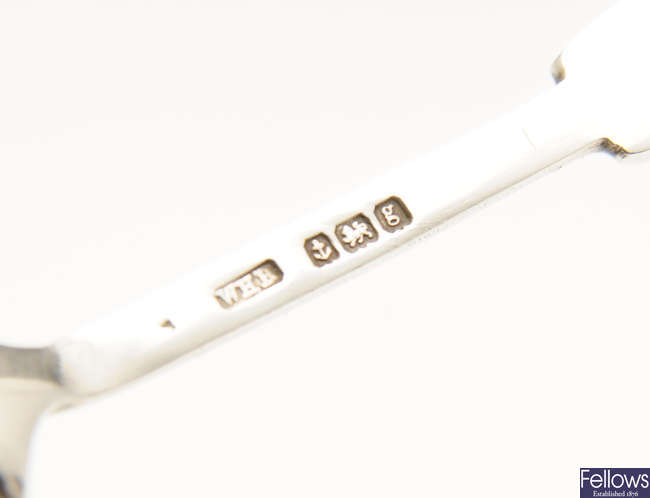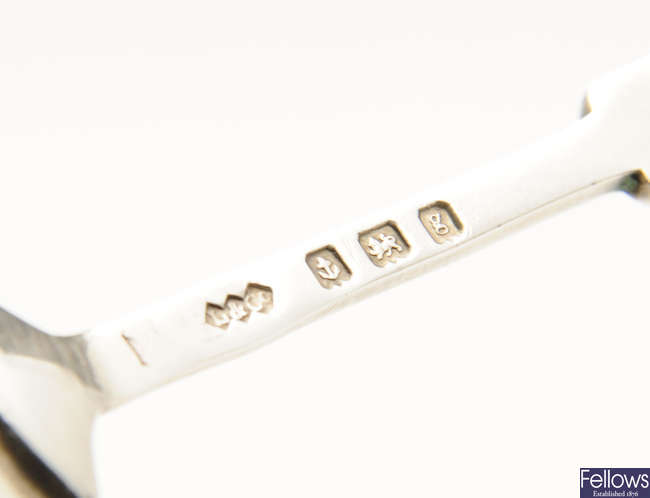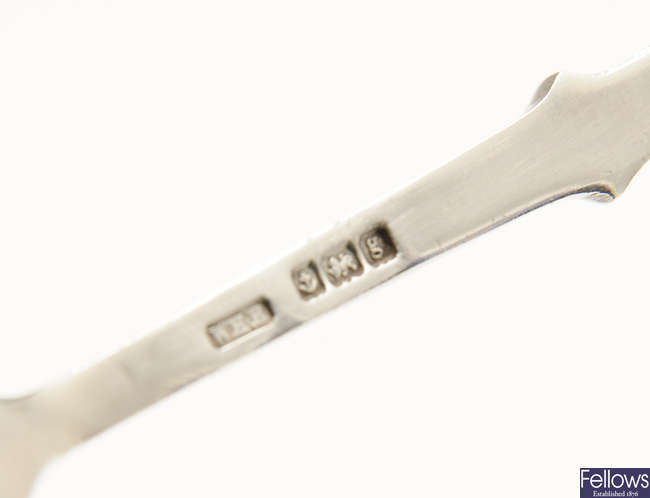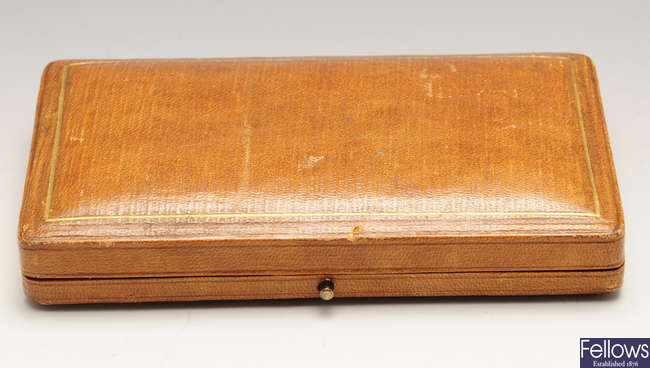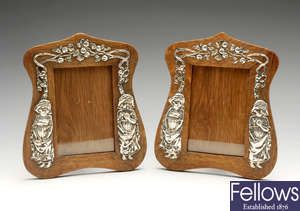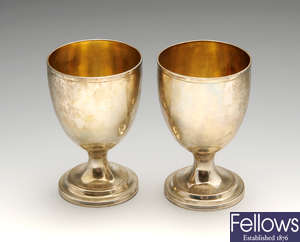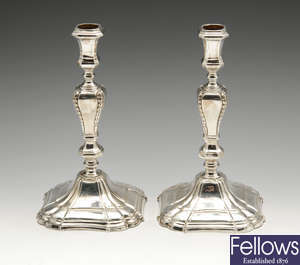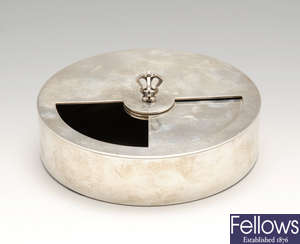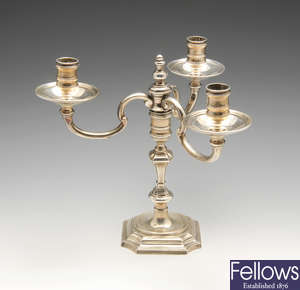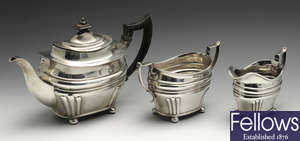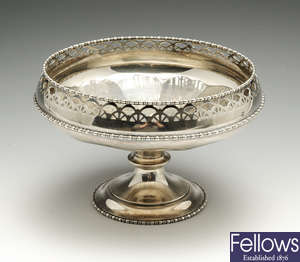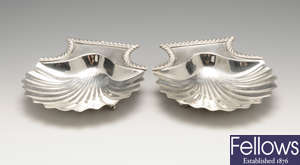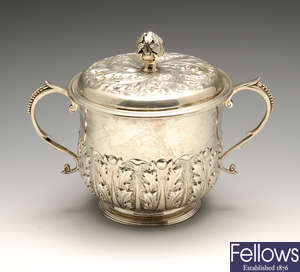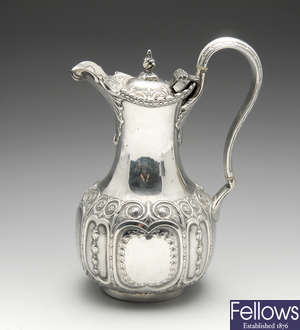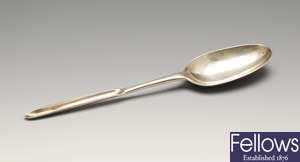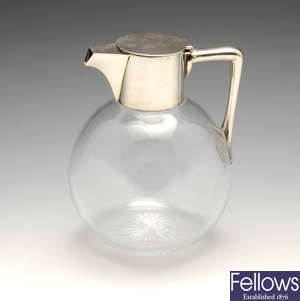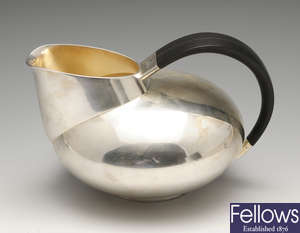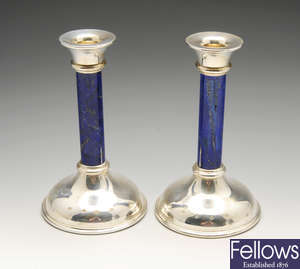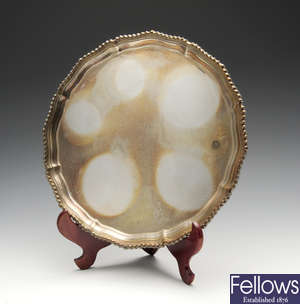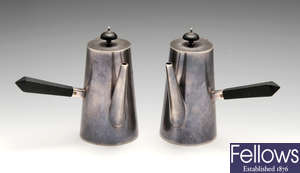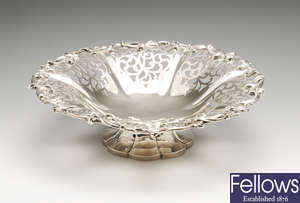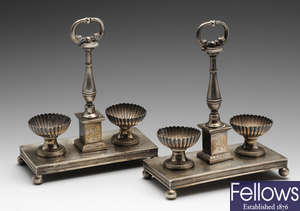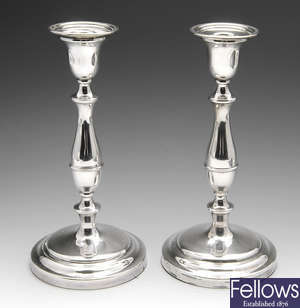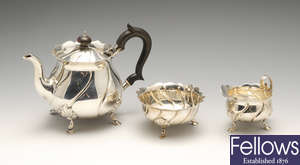Lot 279
A set of three Liberty 'Cymric' silver and enamel spoons in fitted case.
Description
Condition Report
A cased set of three Liberty 'Cymric' silver and enamel teaspoons, comprising three designs attributed to Archibald Knox, 'Sarepta', 'Medea' and 'Decos', each different shaped terminal decorated with stylised foliate motifs on a blue and green enamel ground. Hallmarked Birmingham 1906, two with maker's mark William Hair Haseler and the third Liberty & Co Ltd. Approximate length of each measuring 4 3/8 inches (11.2 cm), gross weight 1.46 ozt (45.4 grams). All three of these Cymric spoon designs appear in Liberty's first illustrated catalogue from November 1899. The catalogue shows various spoon designs for the new Cymric silverware range, which were often sold in mixed sets and listed as 'Yule-Tide Gifts.'
Please note: When placing absentee bids, your bids will be rounded up to the nearest bid increment. For more information click the 'Important Notices for Purchasers' button above.
Purchasing information-
All three spoons appear in good overall condition, displaying some general light tarnishing and some expected surface wear, marks and scratches. Bowls appear to have faired well. The bowl of the Sarepta spoon is more of an ovoid shape. The Decos spoon has a very slight kink in the metal at the base of the stem. Some surface wear and scratches to enamel and a few edge nibbles but generally still good. It is possible that enamel is missing from the tip of the Medea spoon? Hallmarks are all located to reverse of the slimmest section of stem and are all clear and legible. The Sarepta spoon is struck with the Liberty & Co hallmark but there is evidence of a further mark underneath, remnants of W and H are visible so it is possibly the mark for William Hair Haseler? General wear to case and scuffs around edges and fading to material lining. Spoons fit well and it it likely the original case.

